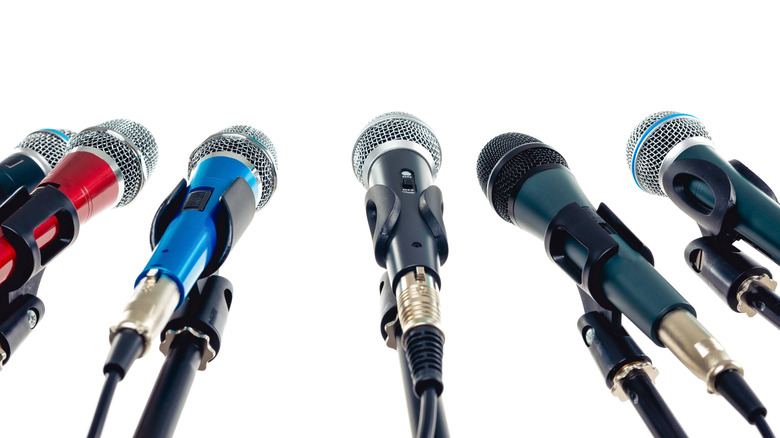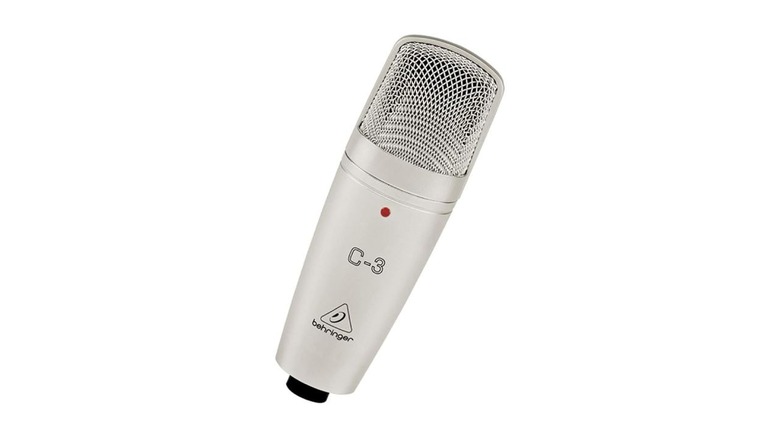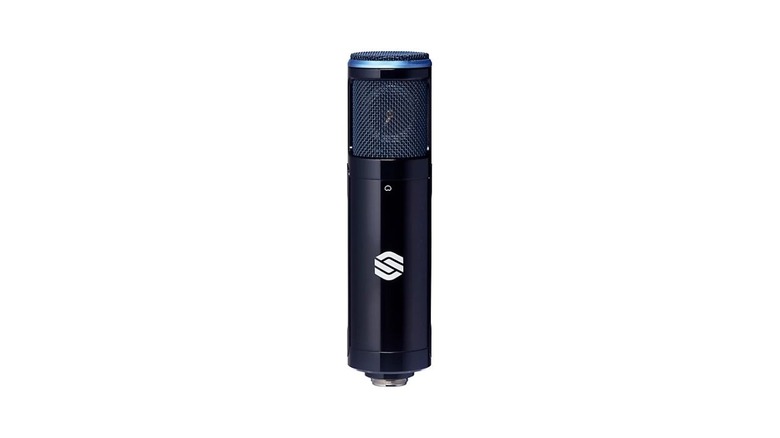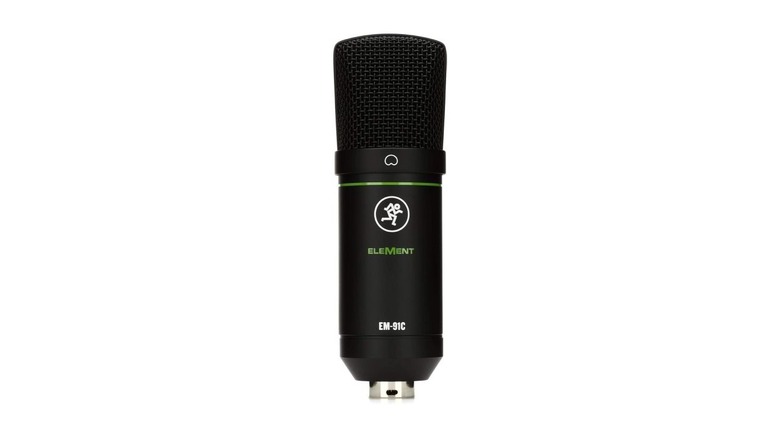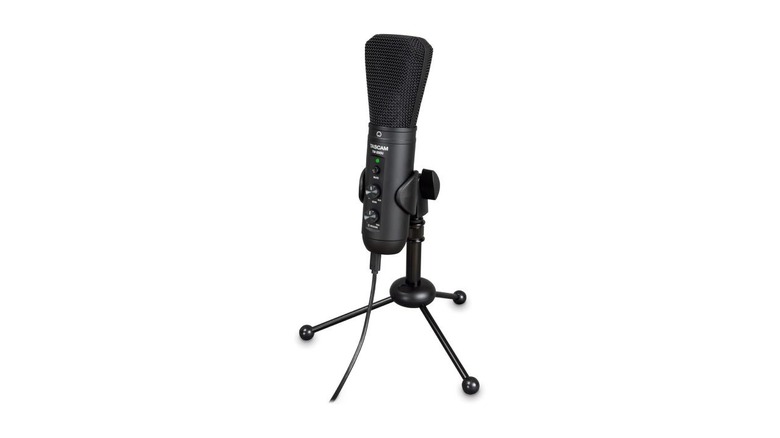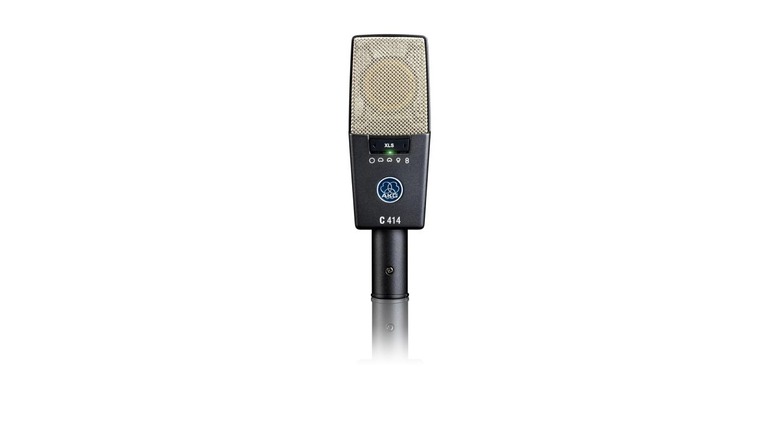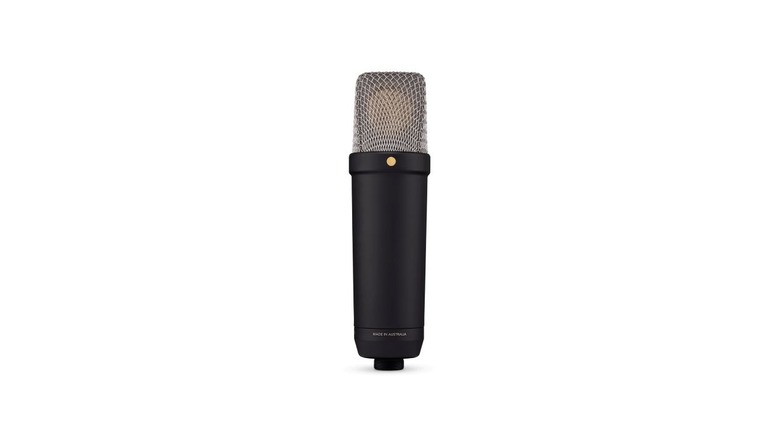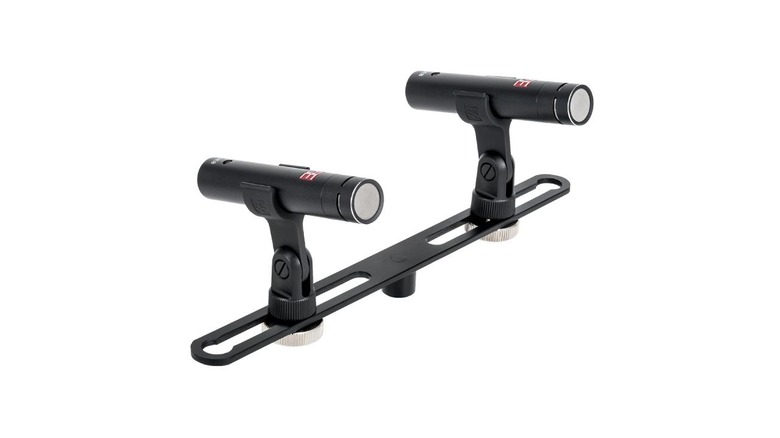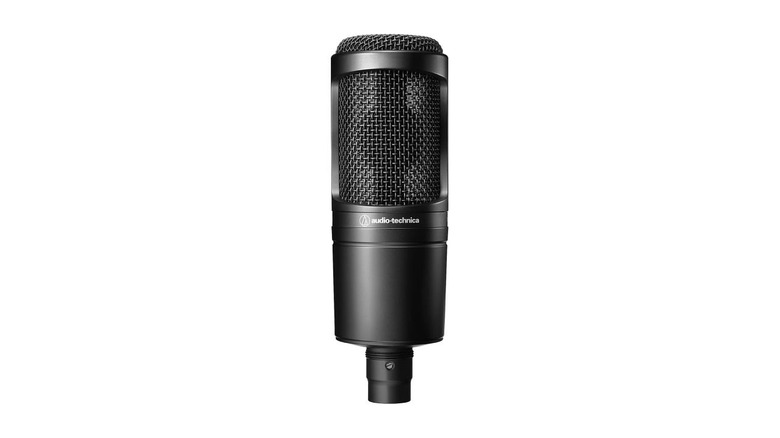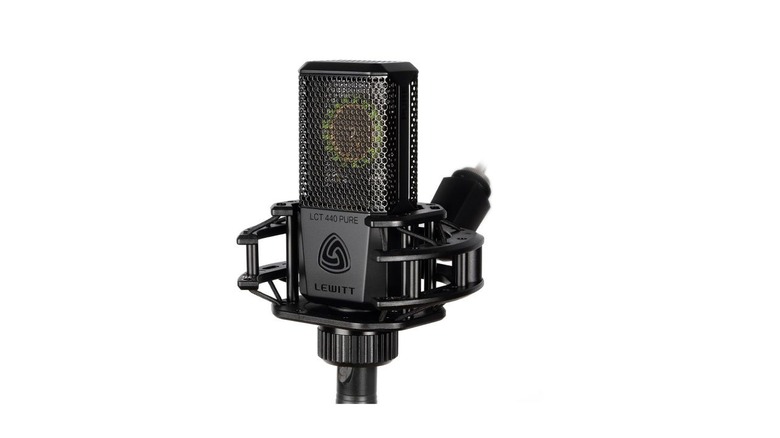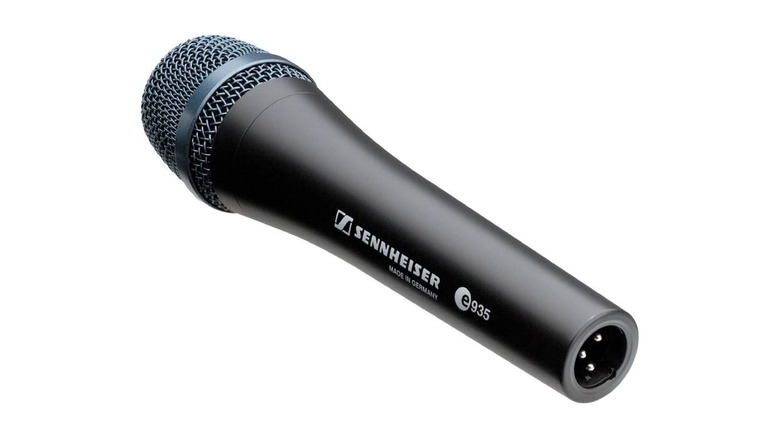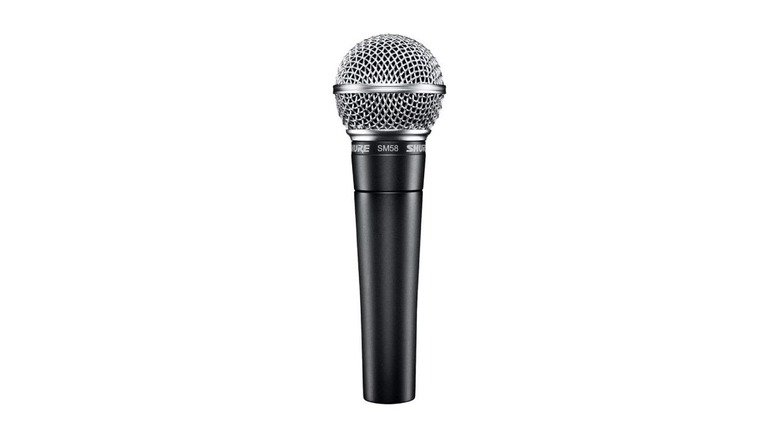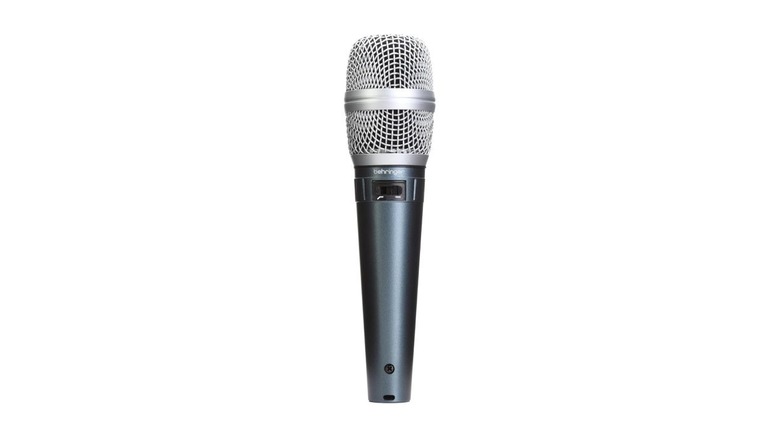Every Major Microphone Brand Ranked Worst To Best
We may receive a commission on purchases made from links.
For whatever reason, perhaps because of their importance in distinctly non-musical industries like broadcasting and event organizing, microphones aren't always considered musical instruments. Musical gear is the term you're more likely to hear, but that does a disservice to the breadth of expressiveness represented by each major microphone brand. From the humble USB plug-and-plays to the microphone used by U.S. presidents since 1965, those instruments shape the world we hear around us every day.
Of course, this can be either a boon or a curse, depending on how good the recording device is. As is the case with other musical instruments, knowing the best microphone brands (or the best guitar brands, or the best amplifier brands) can help you choose what works best for you, but it won't be enough on its own. Even the best, most expensive microphone in the world won't be any good if it isn't the right tool for the job. So, let's take a good look at those tools and the people who make them.
Behringer
Behringer is famous among musicians, producers, and audio engineers as the brand that makes imitation products that are actually pretty good. That reputation does not always extend to microphones, and not because it makes great original designs, but because some of its models can be hit or miss. As is the case with the company's entire music gear division, Behringer makes a lot of microphones: dozens of them, between handhelds, wireless and lavaliers, voice- and instrument-focused. Its best models, especially the cheaper options, tend to be very good for the price. That's the case with the Behringer C3, a decent but extremely cheap $44 large-diaphragm condenser mic that isn't going to last you your whole life, but at this price range, it's a miracle that it works at all.
Other instruments don't fare so well, and some of the really cheap stuff can be especially hit or miss. The 85A is one of those, a Shure SM58 Beta knockoff that tries to be a look-alike more than a sound-alike, going so far as to imitate the blue ribbon around the diaphragm. The XM8500 resembles the SM58 it imitates only in the vaguest sense. They both have a polar pattern, and the shape is more or less the same. Behringer's model is usually priced at $20, so it's hard to fault it for not being as good as something five times as expensive.
Sterling Audio
Sterling Audio mostly sticks to headphones and microphones, which marks it as a bit of an outsider in the larger world of music gear. Some of its more expensive (but still affordable) products are found in the ST line, including the cheaper and somewhat popular ST151. While it's supposed to be the cheapest entry in the not-exactly-cheap ST line, nowadays the 151 is sold for about $30, and at that price, it is extremely good value. The rest of the ST line has its fans too, but they're not exactly cheap. The ST155, in particular, has been called one of the best affordable vocal microphones for home studios.
Sterling Audio's problem, what lands it near the bottom of this list, isn't quality or the price/value proposition, but its name. Mostly, the fact that no one recognizes it. It's hard to trust a product that no one else seems to have tried. Its newest products, the only ones whose existence is acknowledged on the brand's website, are quite decent for the price, but there's little to no discussion on them, and it's hard to find them on the used market. That immediately puts it at a disadvantage compared to other, bigger brands, especially the voice-focused P20 and P30, which have a lot of competition in the sub-$100 price range.
Mackie
Mackie isn't a bad microphone brand, per se, but it's hard to compare it to the more established manufacturers in the industry. Its EM series offers a cheap alternative to popular mic designs that other brands sell for twice as much. Those include the EM-89D, a cardioid dynamic vocal mic that suffers from handling noise; the all-around wonderful large-diaphragm condenser mic EM-91C; and the seemingly less popular "broadcast microphone" EM-99B. Of those, the EM-91C is the most respected, and while it's a great, affordable condenser microphone, it's hardly the gold standard, even just in its price range.
Another popular Mackie mic is the EM-USB. As you might expect, this is a USB microphone, so it's not really trying to compete with most other microphones mentioned here, but with the likes of the AKG Ara and Razer Seiren. It doesn't have out-of-the-box monitoring, which on a USB-only mic is pretty much essential. It's also competing with other Mackie USB mics, of which there are a lot. The rest of Mackie's offering in the audio recording world is less general-use microphones and more specialized gear, like the EM Wave wireless handheld and clip-on mics, both of which use the problematic 2.4 GHz band.
Tascam
Tascam didn't always make microphones in the traditional sense, but it did make some of the best field recorders with great built-in mics, like the popular Portacapture X8. Nowadays, the company has branched out, into making traditional microphones, and while it only makes budget gear, most of it is well received. The TM-80 is a great little budget large-diaphragm condenser microphone that's only $70 and can often be found on the used market. Its lavalier mic, a type of microphone often used in video recordings, is the DR-10L, which for just $80 includes a clip-on mic and a field recorder. That's a great price, sure, but the best part is that it comes with a recorder, the part of the unit you can record on directly, which in this case supports audio resolutions up to 24-bit/48kHz. Most lavaliers don't come with a recorder, let alone a good one.
Another popular super-entry-level microphone from Tascam is the TM-250U, a USB-only condenser mic with a separate mini jack headphone output for monitoring. It seems like the TM-250U used to be sold for quite a bit more than $29, but that's what it costs now. For that price, it's a steal. The TM-280 is a premium-but-still-affordable XLR version of the TM-250, but it's since been discontinued. The TM-200SG is another budget mic, though it doesn't seem to be as popular as Tascam's other audio recording products. This is a highly directional shotgun microphone with a 3.5mm jack and USB connectors, meant primarily to be plugged into a video camera.
AKG
The predominant sentiment on AKG mics is that they're just fine, especially after the company was acquired by Samsung's Harman and the existing R&D team was fired. That's why the brand is now better known for its Samsung Galaxy companion headphones. Opinions on the new headphones are mixed, but AKG still makes some of the most popular over-the-ear headphones on the market. You can't say the same for its microphones. According to long-time devoted users of the brand, the new models of AKG's old gear don't share the classic sound of the brand, from the $1,000 AKG C414 to its recent affordable alternative, the C214. That said, the C214 has a few neat features for its price, like a large frequency range (20Hz to 20KHz) and a switch that adds a high-pass filter around 160Hz.
On the affordable end of AKG's line, we find the AKG ARA, a USB microphone that can switch between omnidirectional and cardioid modes, picking up sounds all around itself or only from the front. Otherwise, it's just another USB mic with a wide frequency range, a plasticky case, and a mediocre stand. The AKG D5 is another beloved affordable mic. It's a handheld supercardioid dynamic with a frequency response that accentuates the high end – something many of its competitors cut out entirely. The AKG D5 has managed to find its place in the crowded market of budget singer microphones for live use.
Rode
Often stylized as RØDE, this Australian microphone company makes great affordable products. Its lavalier mics, like the Lavalier II, are respected and affordable. Similarly, the Wireless GO series is so good it has become a staple of modern video content production, a feat made even more impressive by how ugly they are. Some of the company's more traditional microphones haven't been so lucky. That's the case with the affordable condenser mic Rode NT1-A, which has its fans but struggles to find a place within its price range like the original NT1 did. In the overcrowded world of mid-range microphones, the flat frequency response of the older model is more appealing.
The Gen 5 model of the Rode NT1 is also available with both USB-C and XLR connections, which easily makes it one of the best microphones on the market that you don't need an audio interface to connect. The NT-USB+, also by Rode, is a more budget-friendly alternative, though it's still quite a bit more expensive than your average USB mic. The logic behind the $200 PodMic USB, another one of Rode's budget microphones aimed at content creators, is a little harder to parse. It's a great microphone, sure, but so is the non-USB variant, and that's a whole $100 cheaper. If you choose your audio interface carefully, you could get one of those with an integrated preamp and an XLR PodMic for less than the price of a PodMic USB.
sE Electronics
Unlike other big microphone brands, sE Electronics is focused almost exclusively on microphones. And it makes a lot of them. Of course, not all of them are a hit, but users are overall extremely satisfied. The sE V2 and sE V7 are emblematic of this. Both are dynamic handheld vocal mics, but one is twice as expensive as the other. Why? At $50, the sE V2 is quite good for the price, but it isn't really a handheld mic. What prevents that is the handling noise, the disturbance caused by moving your hand across its body.
The sE V7 takes care of that problem, and does it really well, but for twice the price of the original. This puts it in the same category as the standard-issue of handheld mics: the Shure SM58. That's not to say the sE V7 does poorly in this confrontation, but it's not quite the incredible deal promised by the V2. Other popular sE Electronics microphones also include the versatile sE7 and sE8 small-diaphragm condenser microphones.
Audio-Technica
Audio-Technica is an odd gear brand. It makes microphones and headphones, as many in its business do. It's also one of the most well-known producers of vinyl disc turntables, and it makes a lot of audio solutions for businesses, like wiring mics in conference rooms. The most surprising part of this story is that its microphones aimed at consumers and professional musicians are some of the best in their price range. The Audio-Technica AT2020 is one of the best budget cardioid condenser mics, and like many of its companions and competitors, it's also available in USB-C form.
On the more technical side, the AT4053 is a great budget boom mic that's cheaper than any better alternative. That said, the AT4053 is not immune to interference in certain environments, but it's still widely used in professional applications due to its excellent sound quality and directionality. On the more expensive end of the dollar-to-quality spectrum sits the AT4047/SV, a quiet monodirectional condenser microphone with a wide frequency range. It includes a switch for a high-pass filter at 80Hz and a pad to lower the loudness of the incoming sound, allowing it to record extremely loud noise without distorting or becoming damaged.
Lewitt
Lewitt makes products that are a great bang for the buck, but also features some exceptional (and exceptionally expensive) pro gear. Its lineup isn't as wide-ranging as that of other brands, but the highlights are very bright. The LCT 440 Pure, for one, gets a lot of love as a budget condenser mic for vocals. Budget here means almost $300, but ultimately the price is comparable to similar products from other big brands. The slight boost in the high frequencies is what characterizes this piece of gear, and unlike many of its lower-rated rivals, it doesn't seem to be so exaggerated as to be grating.
The Lewitt LCT 441 Flex is the bigger brother of the 440, as the $100 increase in price shows. However, this might be money well spent. One of the few criticisms aimed at the LCT 440 is that it has a basic feature list for its price. The 441 Flex, perhaps overcorrecting, is a multi-pattern condenser featuring eight directional patterns crammed into a dual-diaphragm microphones. This gives the user extreme control over the directionality of the sounds recorded, which can be that of cardioid, omnidirectional, and anything in between. The wide range of proximity effects available is a nice bonus.
Sennheiser
Sennheiser is a big name among microphone brands, even if not everyone is going to recognize it. The cheaper entries in its lineup are often compared to Shure's, sometimes even surpassing them, as is the case with the Sennheiser e935. The cheaper Sennheiser e835, another capsule dynamic microphone, is similarly beloved, though it's competing with much cheaper gear. If anything, the e835 is even more of a direct Shure SM58 competitor, with a frequency response that accentuates the high end before dropping sharply in the presence and air frequencies.
Even though the German brand is still one of the most popular microphone manufacturers in the world, its future is uncertain. Only a few years ago, Sennheiser's consumer business was bought by Sonova, a major hearing aid brand. It doesn't seem like that business decision has impacted the company's microphone development, perhaps because that falls outside of the "consumer business." The company's popular budget-ish hi-fi headphones, like the Sennheiser HD 400 Pro, don't seem to have been negatively affected either. If anything, the acquisition seems to have given the audiophile brand the opportunity to develop new over-the-counter hearing aids.
Shure
Shure is one of the biggest names in audio production, known for microphones and monitoring solutions. In online discussions, the SM57 and SM58 are inescapable, but you might not have realized how common they are in recording studios as well. When we called the SM58 the standard issue of vocal microphones, we weren't joking. The specs of those two microphones might be a little dated now, but Shure has resisted the temptation to price its most popular gear according to its fame instead of its capabilities. For just $100, you can get an instrument or voice mic that you'll never get rid of — if nothing else, because it's so common it's basically the standard.
That's the secret to the success of the SM line. If you use one of those two instruments (or any of their siblings, like the Shure SM7B), you can be sure that any mixing engineer or live sound person at a music venue will be familiar with it. And why wouldn't they? It's the standard. Some of the company's more recent outings weren't met with the enthusiasm reserved for its classic gear. That's the case with the MV6 USB microphone, which is probably a bit too expensive for what it is. The SM7dB is similarly divisive, being an SM7B with an integrated preamp. The MV7i is a more experimental design — a USB mic that can host another microphone through an XLR cable — and even if it's not the most popular USB microphone, it shows the brand is still interested in spearheading innovation.
Methodology
We selected these microphone brands based on their popularity and trustworthiness (including how prone they are to failure and how helpful their customer support is). We also considered reviews of the brands' most popular products (both from SlashGear and elsewhere), and overall consumer sentiment toward their microphones. Price-to-quality ratio and the breadth of each company's product line were also taken into account.
